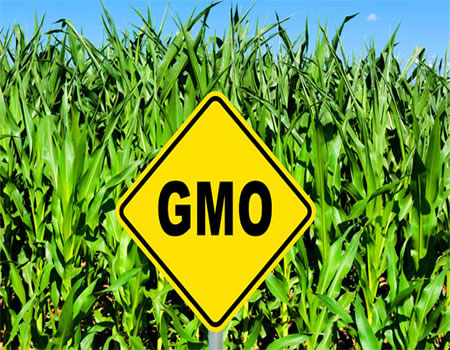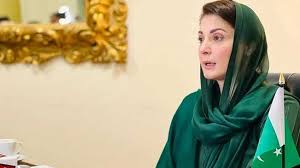NASA Has Some Bad News for Its Stranded Astronauts

NASA Space Technology
You wouldn’t get on a plane if your probability of not making it home alive was 1 in 270. Those odds, however, are what NASA considers an acceptable LOC—or loss of crew—projection for a 210-day stay aboard the International Space Station (ISS). Beating that mortal math was very much on the minds of NASA officials at an Aug. 14 press conference during which they discussed the agency’s efforts to ensure the survival of Butch Wilmore and Suni Williams, the two astronauts currently stranded aboard the ISS.
Wilmore and Williams left Earth on June 5, aiming for a mere eight-day flight of Boeing’s new Starliner spacecraft—a brief ISS stay that would certify the ship for future missions and give the U.S. a much-needed additional option if SpaceX’s Crew Dragon spacecraft, which has been ferrying astronauts to the ISS since 2020, ever has to go offline. Before the Starliner crew even reached the ISS, however, five of the spacecraft’s thrusters began misfiring, and the supply of a gaseous helium that keeps the thrusters pressurized sprang five leaks.
Crew and ship made it to the station intact, but the eight-day mission has now stretched to more than eight weeks, as Boeing and NASA troubleshoot the problem and determine if the Starliner is safe to carry Wilmore and Williams back home. Last week, NASA revealed that it is considering an extreme contingency plan that would involve flying the Starliner home empty. A SpaceX Crew Dragon spacecraft, intended to carry four people for a five-month station stay beginning in September, would instead be launched with just a crew of two, leaving the other two seats empty to bring Williams and Wilmore home in February.
Read More: Heman Bekele Is TIME’s 2024 Kid of the Year
“We still believe in Starliner’s capability and its flight rationale,” Boeing said in an Aug. 7 statement after that possible plan was announced.
One week later, at the Aug. 14 press conference, it became clear that NASA might not have nearly as much faith in the new ship’s mettle. Instead, Ken Bowersox, associate administrator of NASA’s space operations mission directorate, announced that before the end of August, NASA will hold a high-level flight readiness review to make a final determination on Starliner’s fate. That compressed schedule is due partly to the limited life of Starliner’s batteries. They are designed to hold power for just 45 days; ever since that six-plus week period elapsed, they have been getting recharged by the station, but there is only so much of that powering up they can take before failing altogether.
“It’s a fairly major decision about whether we’re going to have crew on-board for a Starliner return,” Bowersox said at the press conference. “We’ve got time available before we bring Starliner home and we want to use that time wisely. We’re expecting that the data analysis will be ready for a … flight readiness review around the end of next week, potentially beginning of the following week.”
In the meantime, Boeing finds itself in the hot seat. This first flight of Starliner came seven years after its initially promised 2017 launch, and the ship has cost $1.5 billion more than the original $4.2 billion contract NASA awarded the company.
“We’ve had very honest discussions with each other,” Bowersox said about NASA and Boeing. “They have confidence in their vehicle. That’s what we would like from them. But … what the NASA team thinks is important, and when we get to a decision, we’ll work through it together.”
Read More: What to Do if You Come in Contact With a Shark
Part of the reason NASA is taking every one of the few days it has left to make that decision has to do with Starliner’s limited reusability. The crew capsule itself is designed to be recovered and reflown, but the faulty thrusters are housed in a section called the service module, which is jettisoned before reentry and burns up in the atmosphere. That makes it impossible to conduct any kind of engineering forensics after the ship comes home, and NASA is thus trying to learn as much as it can from telemetry and data monitoring before the service module is lost forever.
At the Aug. 14 press conference, one reporter asked if it might be possible for a station astronaut to perform a spacewalk to assess the state of the thrusters—a suggestion Joe Acaba, the agency’s chief astronaut, quickly shot down. “We’re not looking at doing a spacewalk,” he said. “The way the system is designed right now, we just don’t get this hardware back, and there’s not much we can do in real time.”
In the past, NASA might have been willing to push the crew a little harder, challenging those 1 in 270 odds and flying Wilmore and Williams home in a less-than-perfect ship. Astronauts have made it safely back to Earth in far-more damaged spacecraft in the past—notably Apollo 13, which suffered a near-catastrophic explosion on its way to the moon in 1970; and Gemini VIII, which spun out of control in orbit in 1966, nearly costing the lives of astronauts Neil Armstrong and Dave Scott, before Armstrong wrestled the ship back under control and then hightailed it home. But the twin losses of the shuttle Challenger in 1986 and Columbia in 2003 have left the agency much more risk-averse and led to institutional changes designed to encourage mission managers to raise concerns well in advance of such tragedies.
Read More: Separating Truth From Fiction in the New Space Race Movie Fly Me to the Moon
“For me, personally, I’ve been very hyper-focused lately on this concept of combating organizational silence,” said Russ DeLoach, chief of NASA safety and mission assurance. “If you look at both, unfortunately—Challenger and Columbia—you can see cases where people had the right data or a valid position to put forward, but the environment just didn’t allow it.” Challenger launched during a Florida freeze—contributing to its foreseeable explosion—and Columbia was flown home when it was not fit to reenter the atmosphere. A rescue shuttle might have helped save that crew.
That new caution leaves Wilmore and Williams stuck. Their initial work schedule for their eight-day mission involved spending most of their time checking out the systems of the Starliner. They have long since finished that job and in the ensuing months, have been pitching in, conducting experiments and maintenance on the ISS, much as they did during their previous tours of duty aboard the station.
“I spoke to both of them in the last day or so,” said Acaba. “They have fully integrated into the … crew. But, you know, we are humans, and this is hard on crew members and their families, and we take that into account.” Still, Acaba adds, there is only so much accommodation Wilmore and Williams will get in the added months they may be facing aloft: “They will do what we ask them to do; that’s their job as astronauts.”
Correction: The original version of this story misstated NASA’s acceptable loss of crew. It is a 1 in 270 chance of not making it home safely, not a 1 in 270 chance of making it home safely.
Discover more from Tamfis Nigeria Lmited
Subscribe to get the latest posts sent to your email.



 Hot Deals
Hot Deals Shopfinish
Shopfinish Shop
Shop Appliances
Appliances Babies & Kids
Babies & Kids Best Selling
Best Selling Books
Books Consumer Electronics
Consumer Electronics Furniture
Furniture Home & Kitchen
Home & Kitchen Jewelry
Jewelry Luxury & Beauty
Luxury & Beauty Shoes
Shoes Training & Certifications
Training & Certifications Wears & Clothings
Wears & Clothings
















